I actually did do some mending for the Make Do & Mend HSF challenge: there has just been so much else to post that I haven’t gotten around to writing about it!
First, a little 10 minute mend. One of the bones in my 1770s silver gilt stays was the tiniest bit too long, and had worn a hole in the kid leather binding:
I unpicked that section of the binding, slipped it off the tab, pulled out the bone, cut it shorter, and smoothed it off:
Then I pushed the bone back in, and used a tiny piece of leftover kid to patch the area with the hole:
All that was left to do was to slip the original binding back on, and re-sew it down:

The Challenge: #1: Make Do & Mend
Fabric: a tiny scrap of kid leather
Pattern: My own, based on one in Jill Salens ‘Corsets’ book.
Year: ca. 1770
Notions: Just thread for the mending.
How historically accurate is it? Period stays were certainly mended, but my binding technique is not the most accurate, so my mend couldn’t be accurate.
Hours to complete: 10 min
First worn: No wearing plans at the moment, but I’m sure it will get worn sooner rather than later.
The second mend was a little more complicated. I cut the pattern wrong with my 1900s Time Lady blouse (my fault – not the patterns!) and the neck back gaped. I solved the problem during the photoshoot by simply taking in a pleat and safety pinning it down (I know!), but I wanted a permanent solution to the problem.
So I looked at extent 1900s blouses and blouse advertisements, and found examples with pintucks running down the entire back
So I unpicked the neck finish and the back waist-tie holder, and sewed pintucks down the entire back, releasing them just above the hem, so I didn’t have to unpick that.
The neck now sits nicely and snuggly against my neck, with no gaping. And the back as a whole is a little slimmer, which will improve the fit.
It took a good hour to do, but well worth it, and I’m so pleased it’s done!
The Challenge: #1: Make Do & Mend
Fabric: 1.5m of circle patterned cotton broderie anglaise (for the original shirt)
Pattern: Wearing History’s 1900-1910 Edwardian Blouse
Year: ca. 1905
Notions: Just thread for the mending.
How historically accurate is it? My original blouse has some inaccuracy issues (the fabric, and the sewing techniques I used to compensate for it) but my mend is based on period examples, so is quite accurate.
Hours to complete: 1
First worn: Not sure when I’ll wear it again, but I’m waiting for an excuse!
Total cost: $18

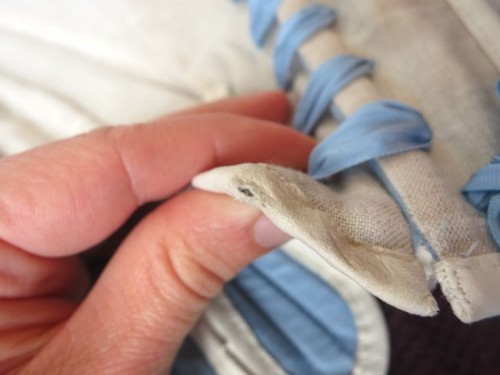
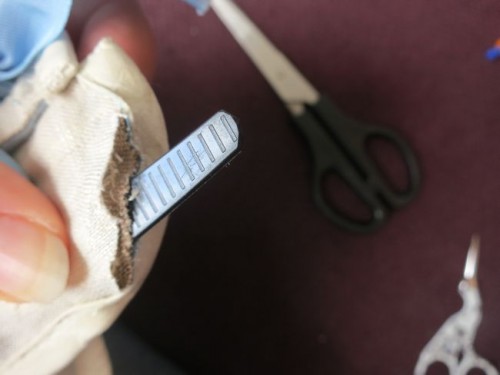
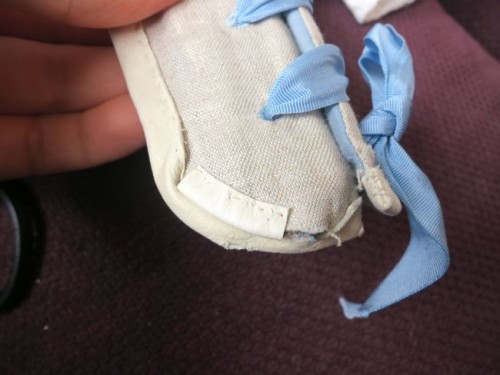
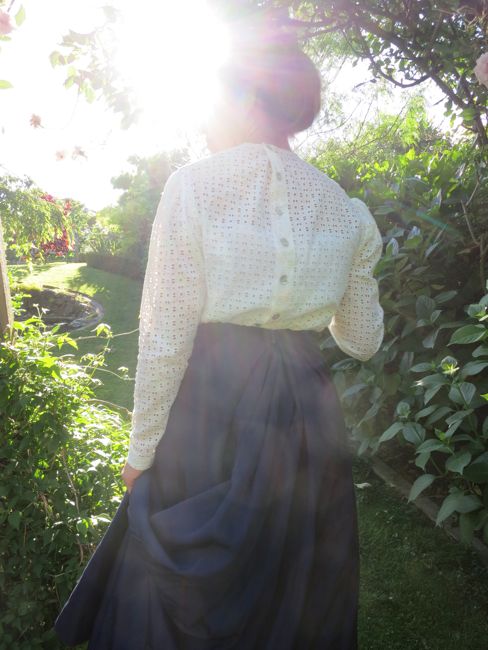
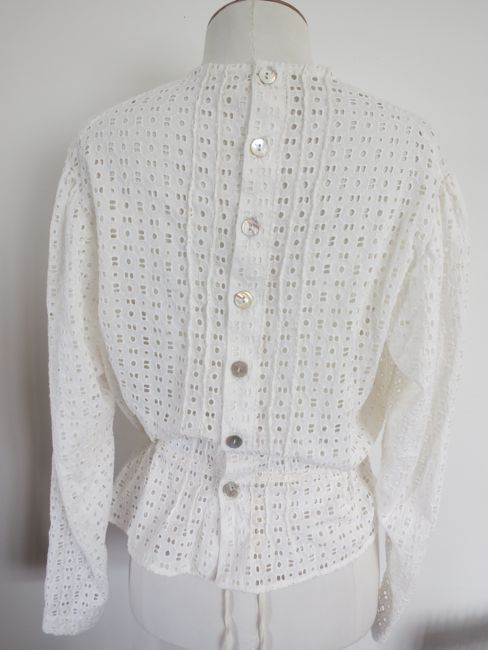
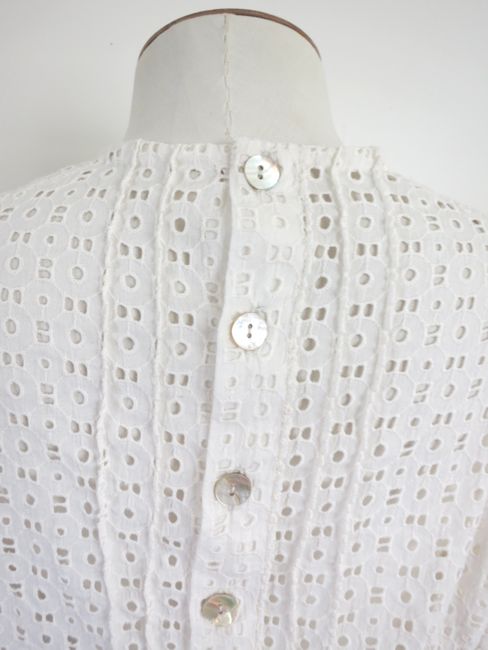
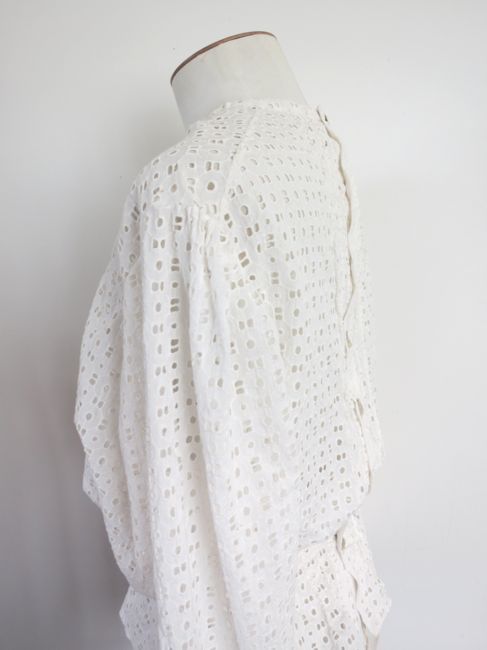

The pin-tucks are an excellent idea! My mother worked on the theory that if you had to alter or repair, you should make it look as if it was what you meant to do all along! This alteration qualifies.
Ah yes, Spamhaus ate my comment! I basically said that those pintucks are neat. 🙂